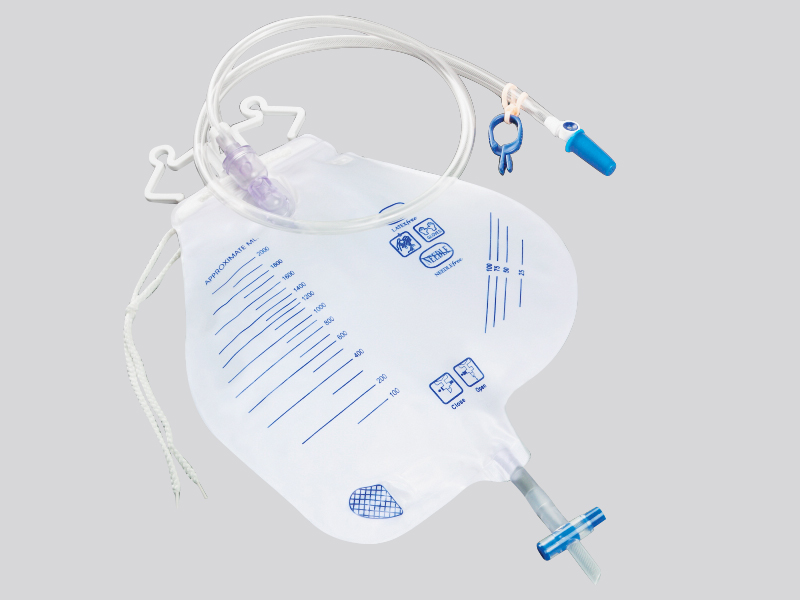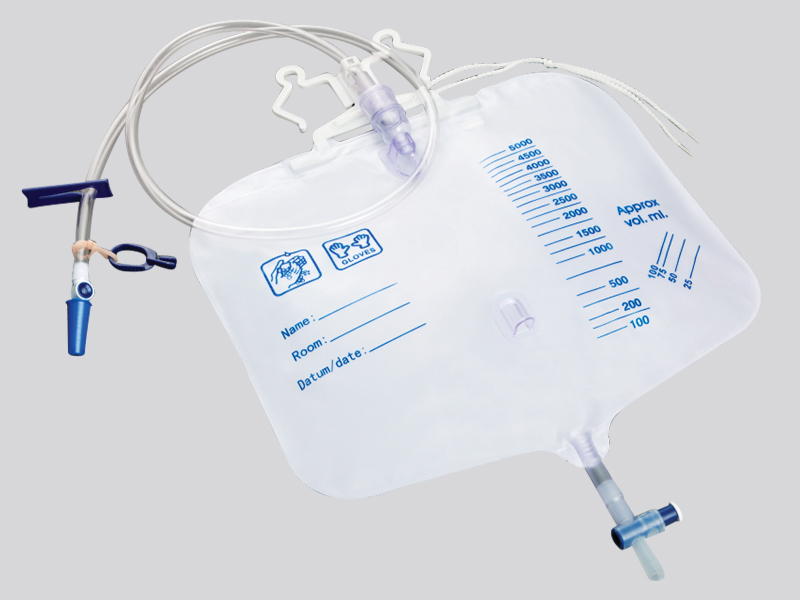The current position:Home > Information dynamic
> Industry Trends
What is the measuring function of disposable precision measuring drainage bags
source:www.cnboyi.net | Release time:2025年09月02日1、 Measurement accuracy: meeting the "correct monitoring" needs of clinical diagnosis and treatment
In clinical practice, changes in fluid volume of patients (such as postoperative, severe, renal disease, and urological patients) are key criteria for assessing the condition (such as renal function, circulatory status, and wound healing), therefore measurement accuracy is the core indicator:
1. Accuracy standard: The error range is strictly controllable
Precision measuring drainage bags that comply with medical industry standards (such as YY/T 0489-2011 "Disposable Drainage Bags") typically have a measurement error of ≤± 5% (some products can be as low as ± 3%), which is much higher than ordinary drainage bags (with errors mostly above ± 10%).
For example, when the actual drainage fluid is 1000mL, the reading deviation of the precision bag does not exceed 50mL, which can provide reliable data for doctors to determine whether there is oliguria, polyuria, or abnormal drainage (such as kidney disease patients who need to correctly monitor hourly urine volume, excessive deviation can lead to medication or fluid replacement decisions errors).
2. Adapt to different range requirements
Products are usually divided into "small range" (such as 0-500mL, suitable for pediatric and critically ill patients' hourly urine volume monitoring) and "large range" (such as 0-2000mL, 0-3000mL, suitable for 24-hour total volume monitoring), and some are also designed with "segmented high precision" (such as 0-200mL interval with denser scales and higher accuracy), covering the measurement needs of different clinical scenarios.
2、 Measurement Design: Optimizing Reading Experience from "Structure to Scale"
The precision metering drainage bag solves the problem of "blurry readings and susceptibility to position influence" in ordinary drainage bags through targeted structure and scale design:
1. Clear scale markings: anti misreading, easy to identify
Scale material: It is made of acid and alkali resistant and anti-aging transparent medical PVC/PE material. The bag body (or independent metering chamber) has high transparency. Scale printing uses high contrast ink (such as black and blue), which can be clearly recognized even under the light of the ward.
Scale unit: uniformly labeled as "mL (milliliters)", and some products are also labeled as "oz (ounces)" to meet different needs; The scale spacing is optimized according to the range (such as every 10mL for small ranges and every 50mL for large ranges) to avoid misreading caused by overly dense scales.
2. Stable metering chamber/position adaptation design: Ensure correct readings
Independent measuring chamber: Some products are equipped with an "independent measuring bag" (separate from the storage chamber), which allows the drainage fluid to enter the measuring chamber to complete the reading and then discharge into the storage chamber to avoid excessive liquid in the storage chamber causing deformation of the bag body and scale deviation;
Anti dumping/fixing structure: The bottom or side of the bag body is designed with hooks and straps, which can be fixed on the bedside or wheelchair to ensure that the bag body is in a vertical state during measurement (horizontal or inclined will cause the liquid level to be uneven and the reading to be high/low). At the same time, some products are marked with a "horizontal reading line" next to the scale line to indicate the correct reading position (the line of sight should be level with the liquid level).
3. Auxiliary metering function: meets special needs
Pouring measurement: Some products are designed with a "closable measuring chamber valve". When pouring out the liquid from the storage chamber, the measuring chamber can retain the current reading without the need to start recording from scratch;
Scale wear resistance: The printing layer has undergone special treatment to prevent the scale from falling off due to repeated friction (such as during patient activity or organization), ensuring effective measurement function throughout the entire usage cycle (usually 1-7 days, replaced according to medical advice).
3、 Usage scenario: Clinical value of accurate measurement
The core value of its measurement function is reflected in its support for "diagnosis and treatment decisions", and typical scenarios include:
Postoperative monitoring: For example, after liver and gallbladder surgery or urology surgery, the amount of drainage fluid needs to be monitored to determine if there is bleeding (if there is a sudden increase in drainage fluid 1 hour after surgery, it may indicate wound bleeding and require emergency treatment);
Intensive care: ICU patients need to monitor their urine output every hour to assess circulatory perfusion and renal function (if the urine output of a shock patient is less than 30mL/h, it indicates insufficient renal perfusion and requires adjustment of fluid replacement or vasopressors);
Chronic disease management: For patients with nephrotic syndrome and heart failure, it is necessary to accurately measure urine volume within 24 hours, guide the adjustment of diuretics and fluid replacement, and avoid edema or electrolyte imbalance.
4、 Attention: Ensure that the measuring function is effectively utilized
Proper use is necessary to ensure measurement accuracy. In clinical practice, attention should be paid to:
Pre use inspection: Confirm that the bag body is not damaged, the scale is clear, and the measuring chamber/valve is not blocked;
Correct fixation and reading: It must be hung vertically, with the line of sight level with the liquid surface (the reading is higher when viewed from above and lower when viewed from above);
Timely pouring and recording: When the liquid approaches the upper limit of measurement (such as when the range is 2000mL to 1800mL), it is necessary to pour the liquid in the storage chamber in a timely manner to avoid excessive expansion of the bag body causing deformation of the scale;
Periodic replacement: Disposable products cannot be disinfected and reused, and should be replaced according to medical advice (usually 1-3 days, immediately replaced in case of contamination) to avoid material aging, contamination affecting measurement or causing infection.
Prev:
Where is the non-woven fabric used for disposable…
Next:
Which patients are most suitable for disposable a…

 Cn
Cn En
En WeChat ID:
WeChat ID:







 Contact us
Contact us
 Add WeChat
Add WeChat
 Telephone
Telephone